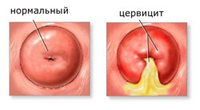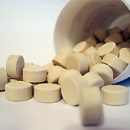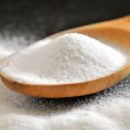SalpingoForit: Symptoms of acute and chronic inflammation of appendages. Prevention and treatment of adnexitis.
Content
- Symptoms of chronic inflammation of appendages
- Treatment and prevention of inflammation of appendages
 The uterus attachments include uterine (phallopy) pipes that are directly communicated with the uterus, and ovaries lying in the abdominal cavity and contact with the funk-shaped ends of pipes. Inflammation of the appendages is called salpingoophoritis, or adnexite. The infection can enter the appendages by ascending from the vagina and the uterus or hematogenic (with blood current) from chronic inflammation foci or with a generalized viral infection. By the flow of illness, inflammation of the appendages is acute and chronic.
The uterus attachments include uterine (phallopy) pipes that are directly communicated with the uterus, and ovaries lying in the abdominal cavity and contact with the funk-shaped ends of pipes. Inflammation of the appendages is called salpingoophoritis, or adnexite. The infection can enter the appendages by ascending from the vagina and the uterus or hematogenic (with blood current) from chronic inflammation foci or with a generalized viral infection. By the flow of illness, inflammation of the appendages is acute and chronic.
The acute process begins with inflammation of the inner layer of the uterine tube, then it goes to all the layers of the wall (salpingitis), the uterine tube is thickened, painful during examination. Following the phallopyan pipe, the inflammation is inevitably moving into the ovary, therefore it is almost impossible to divide the process into two states in symptoms.
The following complaints say about acute SalpingoForit:
- pain without clear localization in the iliac and inguinal areas, more often on the right, can resemble pain in appendicitis;
- Pains are strong and permanent, give to the lower back, the rectum;
- general weakness, fever, head and muscular pain;
- nausea, bloating;
- Humped urination.
A typical complication of acute adnexitis is the transition of inflammation on the peritoneum and the development of peritonitis. With timely and proper treatment, the process ends with complete recovery, in the absence of such — chronizing.
Symptoms of chronic inflammation of appendages
 The primary chronic salpingo-phorite is distinguished, which begins aside and flows without any bright signs, and secondary chronic salpingo-phorite, which is the outcome of the unrealized acute inflammation of the appendages.
The primary chronic salpingo-phorite is distinguished, which begins aside and flows without any bright signs, and secondary chronic salpingo-phorite, which is the outcome of the unrealized acute inflammation of the appendages.
Chronic adnexite pain — stupid, butter, arise after supercooling, sexual intercourse, before menstruation. They are accompanied by watery and whitish vaginal discharge. Symptoms include impairment of menstrual cycle. Along the way, problems in sexual life appear (soreness with sexual intercourse, decreased libido, anorgasmia). Often the only sign of chronic adhesitis becomes infertility, which speaks of a long-term course of the disease. Despite the smoothness of symptoms, chronic inflammation is dangerous by their outcomes. It can be spikes in the abdominal cavity that impede the normal ripening of follicles and the outlet of the eggs that violate the mobility of pipes, the sclerosis of the ovary, fraught with a decrease in the production of hormones, infection of the pupil pipe, which leads to infertility and ectopic pregnancy. In place of the affected appendages, inflammatory tubarous conglomerate is formed, in which a purulent cavity may appear (tubarous abscess). Such a state requires surgical intervention with the removal of the ovary and the fallopian tube from the sore side.
Treatment and prevention of inflammation of appendages
The main preventive event is to maintain immunity, namely: treatment of chronic infections, full nutrition, healthy sleep, avoiding hypothermia. Remember that venereal infections often become the cause of salpingooforita. Abortions, scraping of the uterine cavity, setting the intrauterine helix increase the risk of ascending infection, so patients should be particularly careful in the period after intervention.
Treatment of uncomplicated adnexitis — Medicate. Approach antibacterial drugs, anti-inflammatory and immunomodulatory products. If the symptoms of inflammation of the appendages are used by physiotherapy treatment methods.









